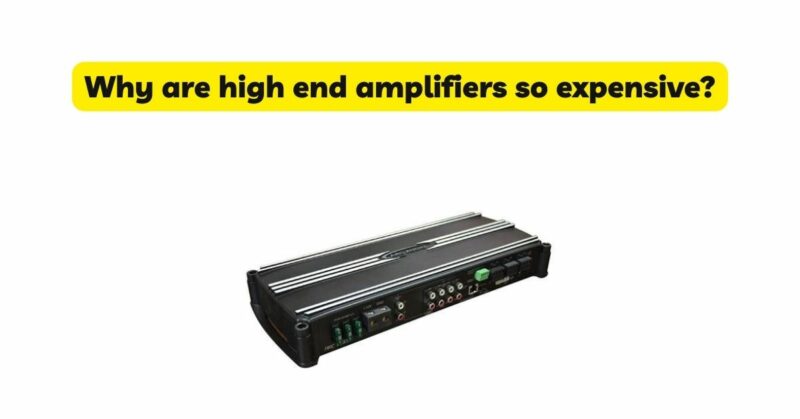High-end amplifiers have long been associated with premium price tags, often leaving consumers curious about the factors that contribute to their steep cost. In this article, we will delve into the complexities of high-end amplifier pricing, exploring the various factors that justify their elevated prices. By understanding the elements that go into the creation of these amplifiers, we can gain insights into why they command a premium in the audio market.
Engineering and Design: One primary reason for the high cost of high-end amplifiers lies in their engineering and design. Manufacturers invest significant time, expertise, and resources in crafting amplifiers with meticulous attention to detail. Advanced engineering techniques, such as precise circuit board layouts, extensive testing, and the use of high-quality components, contribute to the refined performance and audio reproduction capabilities of these amplifiers.
Quality Components: High-end amplifiers often incorporate top-tier components that are carefully selected for their superior performance characteristics. Premium capacitors, resistors, transistors, and other electronic components are chosen for their ability to minimize signal degradation, reduce noise, and provide a clean and transparent audio signal path. The cost of sourcing and incorporating these high-quality components adds to the overall price of the amplifier.
Manufacturing and Quality Control: The manufacturing process for high-end amplifiers involves meticulous attention to detail, rigorous quality control, and often a higher level of manual labor. Skilled technicians hand-assemble and fine-tune each amplifier, ensuring the highest level of precision and craftsmanship. The additional labor and quality control measures contribute to the higher cost of production, as manufacturers strive to deliver amplifiers of exceptional build quality and reliability.
Research and Development: Developing a high-end amplifier requires extensive research and development efforts. Manufacturers invest in exploring innovative technologies, advanced circuit designs, and proprietary algorithms to push the boundaries of audio performance. The expenses incurred during the research and development phase are factored into the final cost of the amplifier, as they represent the investment made in delivering cutting-edge audio reproduction capabilities.
Exclusive Designs and Limited Production: Some high-end amplifiers feature exclusive designs or limited production runs, adding to their exclusivity and higher price point. Manufacturers may collaborate with renowned industrial designers or release limited editions of amplifiers, incorporating unique aesthetics or materials. These design elements and limited availability contribute to the perception of luxury and craftsmanship, warranting the higher price tag.
Specialized Features and Customization: High-end amplifiers often offer specialized features or customization options that cater to the specific needs and preferences of discerning audiophiles. These features may include advanced connectivity options, dedicated headphone amplifiers, multiple inputs and outputs, tone controls, and advanced digital signal processing capabilities. The incorporation of such features, along with the additional research and development required, contributes to the overall cost of the amplifier.
Brand Reputation and Legacy: Brand reputation and legacy play a significant role in the pricing of high-end amplifiers. Established audio companies with a history of producing exceptional audio equipment often command higher prices based on their reputation for quality, performance, and innovation. Consumers are willing to invest in amplifiers from reputable brands due to the assurance of superior craftsmanship and a legacy of audio excellence.
Market Demand and Exclusivity: The high-end audio market operates on a different scale compared to mass-market consumer electronics. The demand for high-end amplifiers is generally lower, resulting in economies of scale that are not enjoyed by mass-market products. Additionally, the exclusivity associated with owning a high-end amplifier contributes to its premium price. The limited production quantities and the niche nature of the market play a role in setting higher price points.
Conclusion: The cost of high-end amplifiers is a result of several interrelated factors, including advanced engineering, quality components, meticulous manufacturing, research and development, specialized features, brand reputation, and market dynamics. While the price may initially seem daunting, it is important to recognize the craftsmanship, innovation, and attention to detail that go into creating these amplifiers. For audio enthusiasts seeking the highest levels of performance and audio reproduction, high-end amplifiers represent a worthwhile investment that can provide a truly exceptional listening experience.


